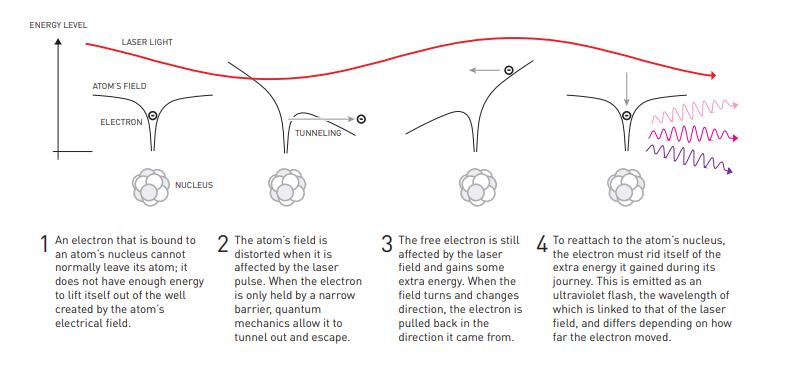ANSTO scientists always await with interest the announcement of the Nobel Prizes® in physics, chemistry and medicine/physiology. This year there are some synergies with scientific activities at ANSTO, which are particularly relevant as they relate to gaining information about processes within molecules and atoms.
ANSTO undertakes studies of quantum effects, nanotechnologies and has supported research on the development of mRNA vaccine for COVID.
Light and sub-atomic particles are essential in the operation of the Australian Synchrotron, Centre for Accelerator Science and Australian Centre for Neutron Scattering.
Experiments with light capture the shortest of moments
Three Nobel Laureates in Physics 2023 are being recognised for their experiments, which have given humanity new tools for exploring the world of electrons inside atoms and molecules. Pierre Agostini, The Ohio State University, Columbus, USA, Ferenc Krausz Max Planck Institute of Quantum Optics, Garching and Ludwig-Maximilians-Universität München, Germany, and Anne L’Huillier Lund University, Sweden have demonstrated a way to create extremely short pulses of light that can be used to measure the rapid processes in which electrons move or change energy.
Their experiments have produced pulses of light so short that they are measured in attoseconds, demonstrating that these pulses can be used to provide images of processes inside atoms and molecules.

“They have developed laser technology capable of measuring electron behaviour over time periods as short a couple of hundred attoseconds (a million million millionths of a second). Electrons – the outer shell of atoms that make up most of the universe – move very fast. Trying to measure them using slow-pulse lasers is like trying to capture a lightning strike with your mobile phone camera.
“You are likely to be able to get information on the environment before and after the strike, but not the exact moment of interaction. This development gives scientists the ability to see what electrons are doing as they interact with the world around them, for example, during electron transfer between atoms.
“This has an important impact for understanding the chemistry needed in developing new, more efficient, and high-performing electronics materials, or to survey and understand changes in biological molecules caused by diseases,” said David Child, Acting Leader, Centre for Accelerator Science.








